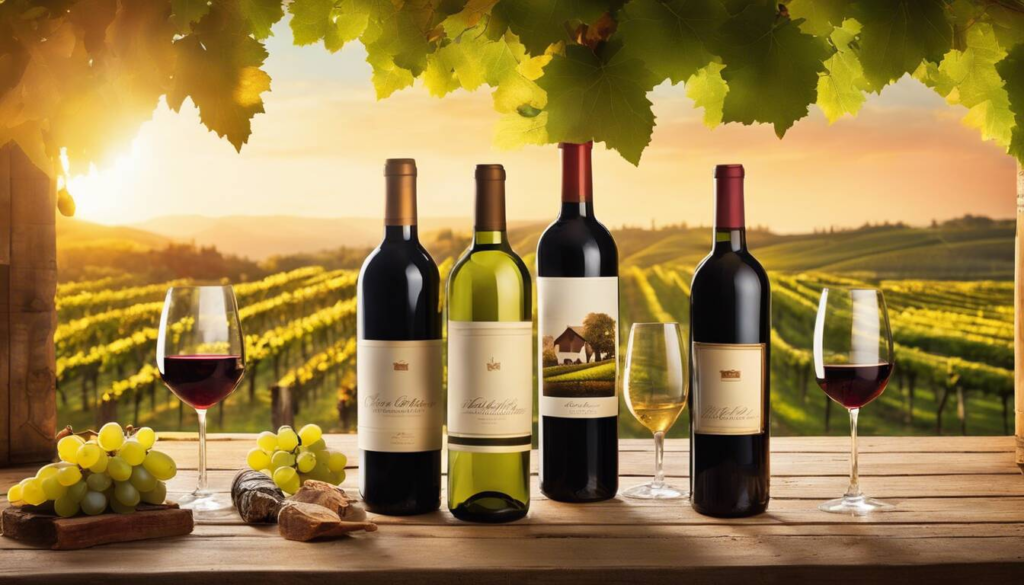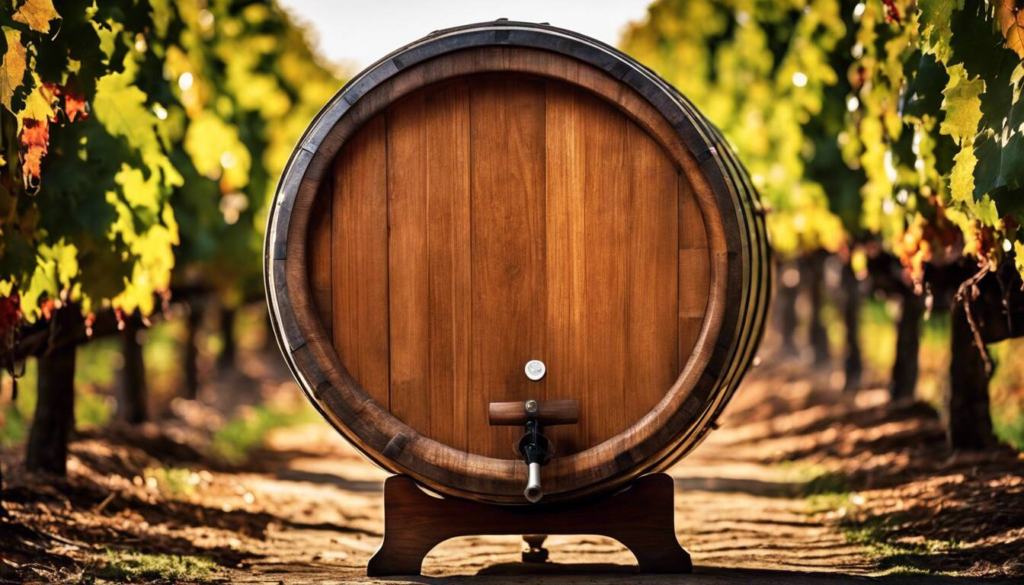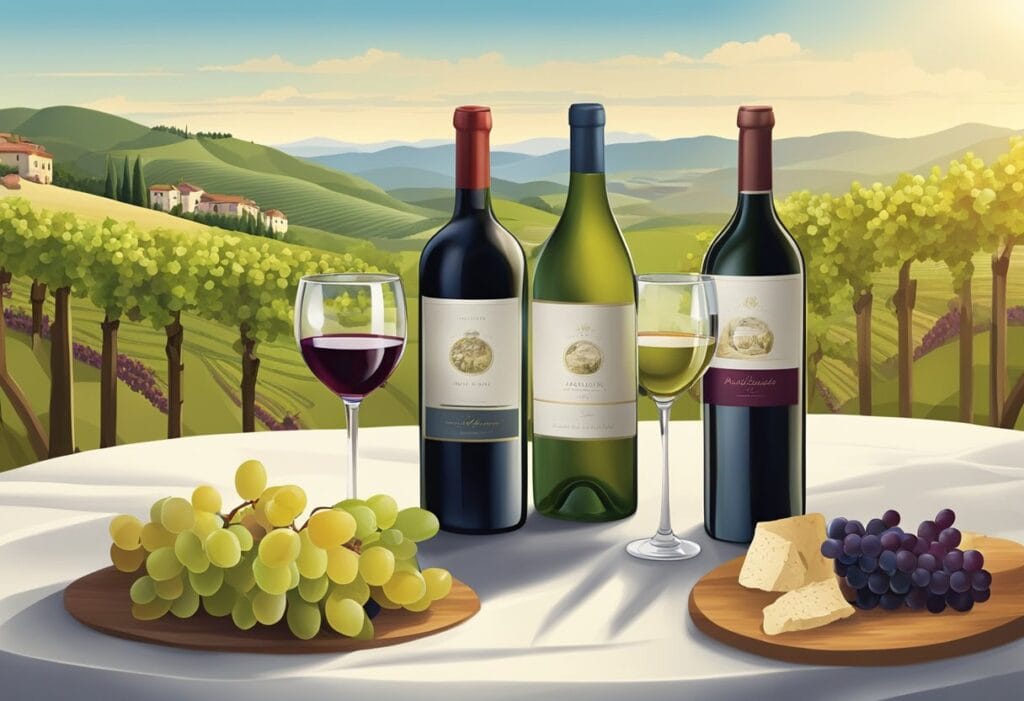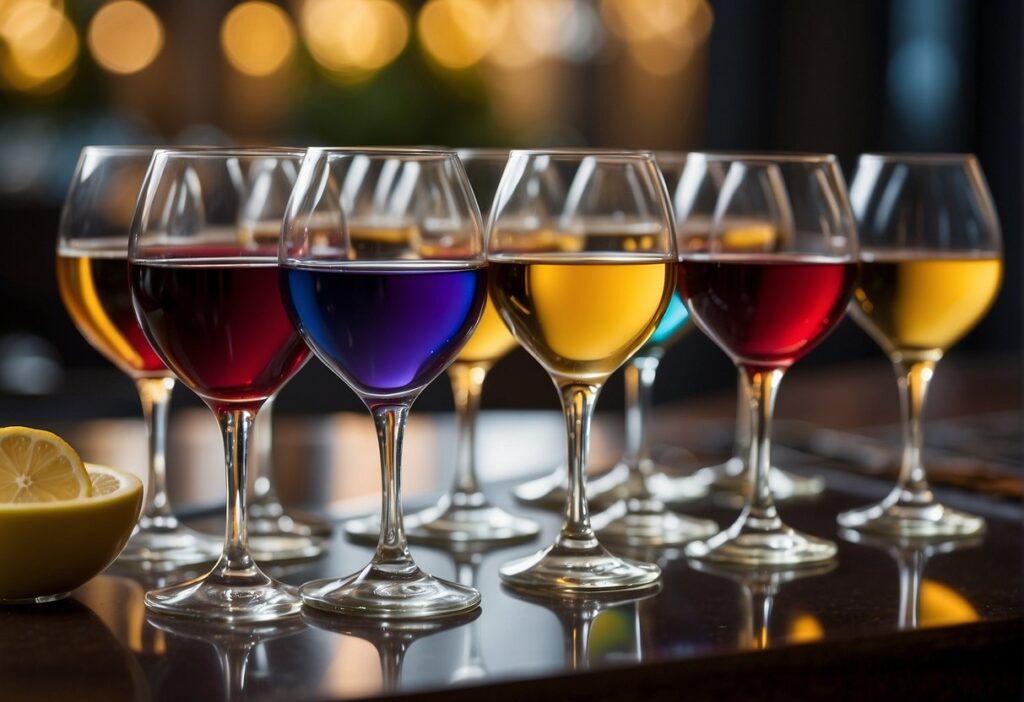Wine varietals are made from a single type of grape, like Chardonnay or Merlot. Each varietal has unique qualities, including taste, smell and even color, that make it distinct in the vast world of wines. But here’s a fun twist – many varietals can taste quite different depending on where the grapes were grown. So learning about varietals is just the start of your wine adventure. Now, how about we explore some popular varietals?
Some popular wine varietals include Chardonnay, Cabernet Sauvignon, Pinot Noir, and Sauvignon Blanc. Each varietal offers unique flavors and characteristics based on the grape variety and where it is grown.

Wine Varietals Explained
If you’ve ever perused the wine aisle at a store or looked at a wine list and found yourself overwhelmed by the choices, you’re not alone. The world of wine is vast and diverse, with countless varietals to discover. Understanding wine varietals is critical for any beginner looking to navigate through this rich tapestry of flavors.
So, what are wine varietals? In essence, a varietal refers to wines made predominantly from a single named grape variety. That means if you pick up a bottle labeled “Chardonnay,” it’s made mostly from Chardonnay grapes. This is just like buying apple juice made from only apples! Knowing the varietal of a wine allows you to have some idea of what taste to expect before you even take a sip.
Each wine varietal has its own distinct set of characteristics, which can vary greatly depending on the grape variety and where it’s grown. For example, a Cabernet Sauvignon from California will taste different than one from Bordeaux due to differences in climate, soil, and winemaking techniques.
Let’s explore some popular wine varietals and their distinctive characteristics:
| Wine Varietal | Origin | Flavors |
|---|---|---|
| Cabernet Sauvignon | Bordeaux, France | Black currant, cedar, and tobacco |
| Chardonnay | Burgundy, France | Apple, citrus, and butter |
| Merlot | Bordeaux, France | Plum, chocolate, and herbs |
| Pinot Noir | Burgundy, France | Cherry, raspberry, and mushroom |
| Sauvignon Blanc | Bordeaux, France | Citrus, tropical fruits, and grassy notes |
Many new wine enthusiasts might wonder about varietal blends. Varietal blends offer winemakers an added level of artistic freedom that can be done during a blending process with wine from tanks and barrels or even be done in the field during harvest. However, the focus here is on single-varietal wines—that is, wines made primarily from one specific grape variety.
By understanding the basics of wine varietals and their characteristic flavors, beginners can begin to navigate the diverse world of wines with more confidence and appreciation.
Now equipped with foundational knowledge on wine varietals and their distinctive flavors, it’s time to deepen our understanding by exploring the classification of red and white wines.
Classification of Red and White Wines
When it comes to classifying red and white wines, we rely on a few key features that set them apart. Most notably, the color and the type of grape used in their making play major roles in differentiating between the two. Let’s break it down further:
Red Wines
Red wines, as the name suggests, are bold, rich, and boast deep colors ranging from ruby to maroon. They are made from black or red grapes and get their distinctive color and tannins from the grape skins during the fermentation process, a method known as maceration. The longer the skins are in contact with the juice during fermentation, the deeper and more intense the color and tannins become. Some popular red wine varietals include Cabernet Sauvignon, Merlot, Pinot Noir, and many others.
White Wines
On the other hand, white wines are typically made from green grapes with a clear or pale appearance. These wines don’t have any contact with the grape skins during fermentation, unlike their red counterparts. This results in a lighter body and lower tannin levels compared to red wines. Some well-known white wine varietals include Chardonnay, Sauvignon Blanc, Riesling, and a host of others.
To put it simply: if red wine is like a warm blanket on a cold night – rich, intense, and with noticeable texture – then white wine is more like a breath of fresh air – crisp, light, and delicate. Each type has its own unique character that makes them enjoyable in different ways.
Just think about your favorite meal for a moment—how do you choose what to pair it with? When you’re savoring a juicy steak or a hearty pasta dish, you may find that a glass of bold and robust Cabernet Sauvignon complements those flavors perfectly. Alternatively, when you’re enjoying seafood or a light salad, a refreshing glass of Sauvignon Blanc might be just the thing to enhance your dining experience.
Understanding the key differences between reds and whites allows us to make informed choices when selecting wines to complement our meals or occasions. It’s also an essential building block in your journey towards understanding and appreciating the wide world of wines.
By recognizing these fundamental distinctions between red and white wines, we can better appreciate their unique attributes while exploring more specific varieties within each category.
Notable Wine Varietals and Their Grapes
Cabernet Sauvignon: This classic red wine grape hails from Bordeaux, France, is renowned for its deep, bold flavors. When you savor a glass of Cabernet Sauvignon, you’re likely to experience the richness of black currant, with subtle undertones of cedar, tobacco, and sometimes even a hint of vanilla.
Isn’t it intriguing how the geographic location where these grapes are grown can influence the taste?
Chardonnay: This versatile white grape originates from Burgundy, France, and offers a wide range of flavors. You might detect refreshing apple notes, light citrusy hints, and even a touch of warm vanilla. Buttery and indulgent yet simultaneously crisp and citrusy, Chardonnay embodies a delightful contrast in every sip.
Exploring Other Popular Varietals
It’s captivating to note that each notable grape varietal presents something uniquely special—they all have their own distinctive charm!
Sauvignon Blanc, with its zesty tang of citrus and tropical fruits, brings a refreshing twist to the world of white wines.
In contrast, Pinot Noir, also originating from Burgundy, France, delivers an array of flavors ranging from juicy cherry to earthy undertones. It’s renowned for its lightness balanced with complex and elegant flavors.
And then there’s Merlot, another popular red grape varietal from Bordeaux, France. When you raise your glass to savor a sip, you’re met with luscious notes of plum intertwined with hints of chocolate and herbs.
Varietal blends offer winemakers an added level of artistic freedom—imagine the exquisite harmony created by blending two or more different grape varieties! The process allows winemakers to craft unique flavor profiles that simply wouldn’t be achievable with a single varietal wine.
Throughout various winemaking regions globally, including France, Australia, Italy, and the United States, these varietals thrive in diverse climates and soils. The resulting grapes yield wines with distinctive characteristics that reflect their terroir—the environmental factors that influence the flavor profile of the grapes.
By understanding the unique attributes of each varietal and appreciating the regional nuances that shape them, one can embark on a delightful exploration through the expansive world of wine.
Venturing through a broad spectrum of wine varietals is like embarking on a fascinating journey through diverse landscapes and cultures. Now let’s take a deeper look at what makes varietal blends so intriguing.
Wine Varietals by Region
Wines are deeply connected to where they are grown. The same grape variety can taste very different depending on the region it comes from. This is due to a concept called terroir, which encompasses all the environmental factors that impact a grape’s development, including soil, climate, terrain, and even tradition. Let’s take a deeper look at some renowned wine-producing regions and the varietals that thrive within them.
Napa Valley, California
Napa Valley is synonymous with Cabernet Sauvignon. The warm sunshine during the day and cool evenings create an ideal environment for this varietal, resulting in full-bodied, intense wines with bold flavors of black currant, cherry, and cedar. The well-drained volcanic soils also contribute to the exceptional quality of Napa Valley Cabernet Sauvignon.
Bordeaux, France
Moving across the globe to Bordeaux, you’ll find a blend of primary red grapes including Cabernet Sauvignon, Merlot, and Cabernet Franc. The maritime climate here influences these varietals, giving rise to elegant reds with structured tannins and complex flavors that often include notes of plum, tobacco, and earthiness.
Tuscany, Italy
In the beautiful landscapes of Tuscany, Sangiovese has found its home. This native Italian grape thrives in the hot, dry summers and cooler winters of the region. The result? Rich, medium-bodied wines such as Chianti Classico that boast flavors of cherry, violet, and spice alongside firm tannins.
Barossa Valley, Australia
Down under in Barossa Valley, Shiraz takes center stage. The region’s hot climate produces bold and robust wines with deep flavors of blackberry, plum, and peppery spices. The ancient soils here play a significant role in shaping the character of Barossa Valley Shiraz.
Understanding how geography impacts the flavors and characteristics of wine varietals in each region provides insight into the diverse expressions brought about by terroir. These nuances make each bottle a unique journey through the vineyards and landscapes where the grapes were grown – a delightful exploration for any wine enthusiast or beginner alike.
Lowdown on Quality of Different Wines

Understanding wine quality can be quite complex. It goes beyond just taste and price; it encompasses various factors that play a crucial role in determining the overall value and enjoyment of a bottle of wine.
First and foremost, the concept of “entry-level” vs. “premium” wines is a good starting point. Entry-level wines are often everyday wines meant for immediate consumption. These wines tend to be lighter, fruitier, and more approachable. On the other hand, premium wines are generally crafted from rarer grape varieties or produced using more specialized winemaking techniques. They’re often reserved for special occasions or cellar aging, offering more complexity and nuance.
Aging potential is another important aspect of wine quality. Some wines are intended to be enjoyed young, while others are designed to age gracefully over many years, developing more complex flavors and aromas. For example, high-quality Cabernet Sauvignon might benefit from aging in oak barrels and then further maturing in bottles for several years, allowing it to reach its full potential.
Beyond aging potential, vineyard practices also significantly impact wine quality. Attention to detail in the vineyard, such as precise pruning, controlled irrigation, and sustainable farming practices, can enhance the character of the grapes—all factors that ultimately influence the flavor profile and overall quality of the wine.
Furthermore, the art of winemaking itself plays a pivotal role. Techniques such as oak aging, malolactic fermentation, and extended maceration can transform grapes into exceptional wines with depth and complexity. Specialized methods like hand-harvesting or wild yeast fermentation can further elevate a wine’s quality by adding unique nuances that mass-produced varieties may lack.
In essence, understanding wine quality isn’t just about identifying high prices or big names on labels; it’s about appreciating the meticulous craftsmanship that shapes each bottle. From vine to glass, a myriad of factors coalesce to influence the overall quality of the wine you enjoy.
The intricate details in growing grapes and crafting fine wines open up a world where every sip tells a story. Now, let’s journey into exploring how these flavors pair with various dishes.
Wine Flavors and Pairing Suggestions
Each wine varietal boasts its own unique set of flavors and aromas, making wine tasting an exciting journey for beginners. Let’s delve into some popular wine varietals and unravel their distinctive taste characteristics.
Cabernet Sauvignon
- Origin: Bordeaux, France
- Flavors: Black cherry, black currant, cedar, and tobacco
- Pairing: Grilled meats, aged cheeses
You may wonder why a bold red like Cabernet Sauvignon pairs so well with grilled meats. The robust flavors of the wine complement the rich, savory taste of grilled meats, adding depth to the overall dining experience. The tannins in the wine also help cut through the fattiness of meat, cleansing the palate between each bite.
Chardonnay
- Origin: Burgundy, France
- Flavors: Apple, pear, citrus, butter, and oak
- Pairing: Seafood, creamy pasta dishes
The creamy texture of Chardonnay makes it a delightful companion to seafood dishes and creamy pastas. The wine’s subtle oak notes beautifully complement the richness of these dishes without overpowering them. The fruity and citrusy undertones of Chardonnay provide a refreshing contrast to the creamy textures of the food.
Merlot
- Origin: Bordeaux, France
- Flavors: Plum, black cherry, mocha, and vanilla
- Pairing: Roast chicken, lamb
Consider enjoying a succulent roast chicken with a glass of velvety Merlot. The fruity flavors of Merlot nicely balance out the tender flavors of roast chicken while adding a layer of complexity to the dining experience. The wine’s soft tannins make it a delightful pairing with roasted meats like lamb as well.
Pinot Noir
- Origin: Burgundy, France
- Flavors: Strawberry, cherry, earth, mushroom
- Pairing: Duck, salmon
Pinot Noir’s delicate red fruit flavors and earthy undertones make it an exquisite match for duck and salmon dishes. The wine’s light body and nuanced flavors create a harmonious blend with these foods. It’s all about creating a symphony of flavors on your palate!
Sauvignon Blanc
- Origin: Bordeaux, France
- Flavors: Citrus, green apple, grass, herbs
- Pairing: Salads, seafood
The vibrant acidity and herbaceous notes of Sauvignon Blanc pair wonderfully with light salads and seafood. The wine complements the freshness of salads and seafood dishes while offering a zesty burst of flavors. It’s like adding a splash of sunshine to your dining table.
Understanding the specific flavor profiles of different wine varietals opens up a world of possibilities for enhancing your dining experiences. Each pairing is an opportunity to create a balanced and delightful culinary journey that elevates both the food and wine. With these practical food pairing suggestions in mind, you’re all set to embark on your delicious journey in the world of wine!

